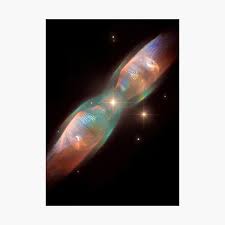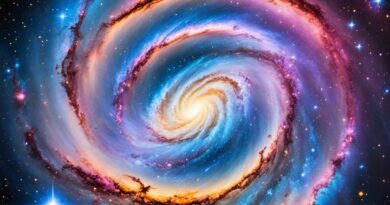Twin Jet Nebula जुड़वां नीहारिका-24
Twin Jet Nebula
Every time, the Hubble Space Telescope produces amazing pictures that capture our hearts. The Twin Jet Nebula’s complex shapes and vivid hues must make it an amazing sight to behold. These pictures not only capture the splendor of the cosmos, but they also offer priceless insights into the processes that have shaped it. The enormity of space and the wonders that yet to be found are mind-boggling.
These kinds of discoveries really bring the complexity and diversity of the universe to light. The intriguing tale of this nebula is further enhanced by the existence of two stars at its center. The diversity of astronomical events is astounding, with each one providing a different perspective on how the universe functions.

Astronomers can learn a great deal about stellar interactions and the effects stars have on their environment by studying bipolar nebulae and their dual-star systems.
The complex dance of celestial bodies in space is vividly depicted by the twin stars’ dynamics, which involve orbiting each other every 100 years and the ejection of gas that gives the nebula its characteristic wings. The furious twin jets that are ejecting at extremely high speeds highlight the intense processes involved in this celestial display. It’s amazing how important insights into the life cycles of stars and the processes guiding the production of these fascinating structures these events offer astronomers.
Follow our Digiknowledge.co.in page for the latest updates about bikes, cars, sports, lifestyle, and many more.
It never ceases to amaze me that the Hubble Space Telescope can produce such colorful and detailed photos of cosmic occurrences. Its keen vision enables us to look far into the cosmos and see, in breathtaking clarity, the beauty and complexity of things like the Twin Jet Nebula.
Scientists can study the dynamics and evolution of celestial bodies with the help of these photographs, which also awe and amaze us. Another example of the extraordinary powers of the Hubble Space Telescope and the human curiosity that propels our cosmic research is the Twin Jet Nebula, with its complex structure and dual-star system.
The detailed explanation creates a captivating image of the twin jet nebula that the Hubble Space Telescope has photographed. An eye-catching “x”-shaped disc is created by the iridescent lobes that protrude from the center star system, where two stars appear as one in a dazzling, radiating color.
The image is given depth and complexity by the contrasting colors seen in the lobes and jets, which range from vivid greens and peaches to delicate blues. These colors also draw attention to the dynamic processes that are taking place within the nebula. With the vastness of space as its background and a smattering of far-off stars, the Twin Jet Nebula is a stunning example of the wonders of the universe.
Is a nebula a star or galaxy?
A huge cloud of gas and dust that exists between stars and serves as a nursery for budding stars is called a nebula. The Latin term “nebula,” which means “mist, vapor, fog, smoke, exhalation,” is where the word first appeared. Dust, ionized gases, and fundamental elements like hydrogen make up nebulae.
What are the 4 main types of nebula?
The three categories of nebulae that are covered are dark, reflection, and emission. Dark nebulae are black against a starry sky, while emission nebulae produce light and reflection nebulae reflect light from surrounding sources. The three types of nebulas that can be distinguished are diffuse, supernova, and planetary (based on appearance).
Which nebula is bigger?
At its longest, the Tarantula Nebula spans more than 1,800 light-years and is the largest known nebula as well as the most active star-forming region in our local galactic neighborhood.October 4, 2019
What is the coolest nebula?
The Bow Tie Nebula is another name for it, and its catalog number is LEDA 3074547. With a temperature of 1 K (−272.15 °C; −457.87 °F), the nebula is the coolest known natural location in the universe. According to current theories, the Boomerang Nebula is a star system transitioning into a planetary nebula.



